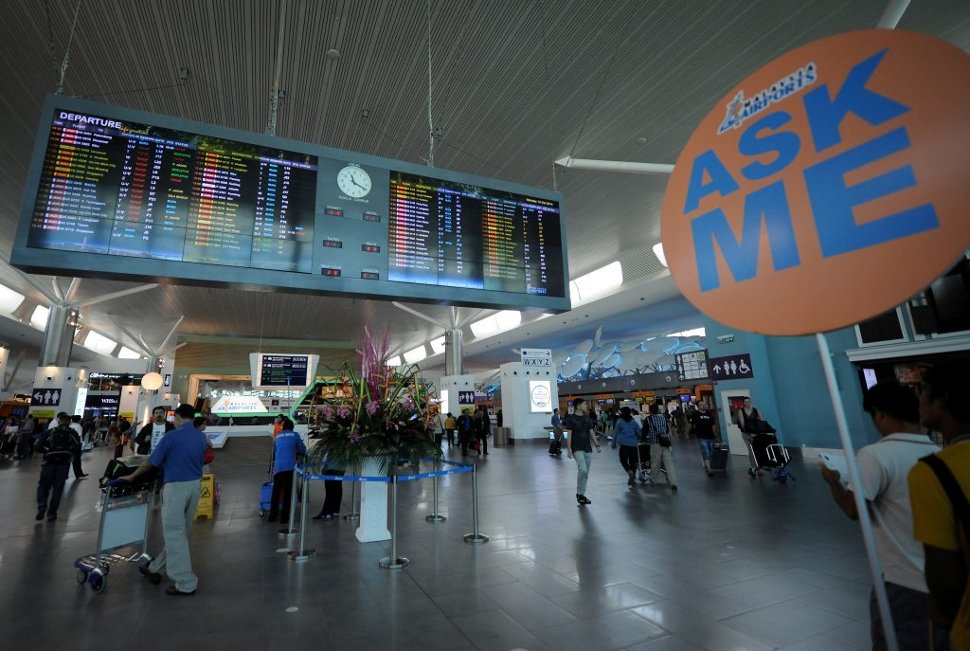29 July 2019
by AFIQ AZIZ / pic by TMR FILE
THE proposal to establish a fully integrated terminal at Malaysia’s main entry — the Kuala Lumpur International Airport (KLIA) and its second terminal klia2 — could be hampered and delayed due to resistance from some airline operators.

According to a source close to the development, Malaysia Airports Holdings Bhd (MAHB) is currently drafting “KUL (Kuala Lumpur) Masterplan”, which among others include the strategy and timeline to implement “airside interlining” between the two busiest airports in Malaysia — handling 59.96 million passengers last year.
However, the source said the plan may face some hurdles should the government or MAHB could not convince the airlines to agree with the move, although the initiative could shorten customers’ connecting time and improve overall aviation business productivity at KLIA.
“This KUL Masterplan may provide an option either to build a fully integrated airside transfer, such as tunnelling or bridge, or start with a simpler way like bussing as a transition as it will not involve so much of capital expenditure, before a proper facility could be built up later.
“Most airlines agree to this, but there are also airlines that are reluctant with this concept because they want to maximise their own capacity at the single airport, instead of sharing the connectivity that would be beneficial for the passengers,” the source told The Malaysian Reserve recently.
“Although the airport operator could implement this plan straight away, having the airlines to agree with this would make the execution much easier,” the source, who declined to be named, said.
According to him, the drafting of the masterplan is expected to be concluded soon, where MAHB is expected to make an official announcement subsequently after.
It is learned that the proposal has been discussed since a decade ago, even before klia2 was constructed in 2010.
Apart from convincing 65 commercial airlines which operate both in KLIA and klia2, the source said MAHB also needs to get the ground handling operators to agree with the plan.
If the plan materialises, it will allow both passengers and luggage system to be fully integrated, saving passenger’s minimum connecting time (MCT) — the amount of transfer time that is considered sufficient for a passenger to make a connection between an arriving and a departing flight.
“By cutting down the MCT, it will certainly help the aviation industry to grow further,” the source added.
klia2 was built to cater to 45 million passengers while KLIA, which began operation in 1999, was built with a capacity to handle 25 million passengers annually.
In April 2019, the Malaysian Aviation Commission (Mavcom) published a report titled “Benefits of Integrated Terminals”, stating that KLIA, or internationally coded as “KUL”, has a longer connecting time compared to Singapore’s Changi Airport and the Suvarnabhumi Airport in Bangkok.
Mavcom said Changi, which has four terminals at present including its low-cost terminal, has a capacity of handling 82 million passengers a year and has recorded an efficient minimum connecting time (MCT) of only 45 minutes.
It stated that in 2018, the airport reported 3,684 of incoming flights per week, in which, for each incoming flight, a passenger can connect to up to 65 outgoing flights at the terminal.
Compared to KLIA, which handled 3,969 flights a week in 2018, the non-existence of the full airside interlining has only allowed a passenger to connect about 24 incoming flights weekly with connecting time of 60 minutes.
Presently, besides the road, consumers at both KLIA terminals are physically connected by the Express Rail Link (ERL) with a three-minute travelling time. The incoming passengers would have to pass the luggage and immigration checks before proceeding to another same procedure for the departing flight.
Moreover, Mavcom suggested that the airside connectivity integration could reduce congestion at Terminal 1. KLIA handled 28.3 million passengers last year, 12% higher than its maximum capacity, while klia2 only reached 70%.
“Discussions with stakeholders (also) reveal that airlines are reluctant to move to klia2 as there is no connectivity between klia2 and KLIA,” Mavcom said.
Citing the experience of the Kota Kinabalu International Airport (KKIA), Mavcom said the passenger traffic increased after the low-cost carrier — AirAsia Group Bhd — moved to Terminal 1 in December 2015.
It also noted that all airlines operating from the airport have benefitted from being in an integrated terminal.
“Arguably, KUL’s traffic could have grown faster if its terminals were integrated, similar to KKIA’s case,” the report said.
In the same month, AirAsia group CEO Tan Sri Dr Tony Fernandes had said in a Twitter post that there was no need for connectivity between the two airports.
“There is an absolute zero need for connectivity between KLIA1 and klia2. You don’t have connectivity between Heathrow and Stansted. Why not talk to airlines? They kinda know,” Fernandes wrote on his Twitter dated April 10.
In May, The Edge also reported him as saying that MAHB needs to check whether it was necessary to have airside connectivity.
“There is nothing fundamentally wrong with (introducing) airside connectivity at KLIA. If MAHB wants to do it, it’s fine, but it has to check whether it is really needed,” The Edge quoted him as saying in the interview.
“As MAHB’s biggest customer, making up 98% of the passenger traffic at klia2, we are saying we do not want it because we do not interline (our passengers) with any other airline except for (our long-haul affiliate) AirAsia X Bhd,” Fernandes had said.
Speaking to the reporters last week, Transport Minister Anthony Loke said improving the air connectivity in KLIA is a part of the government’s longterm vision for the industry.
“Currently, no proposal yet for that, but in the long term, we hope to improvise the interconnectivity between both airports. At present it is still two separate airports,” Loke said.
Source: themalaysianreserve.com
Site Search
Did you find what you are looking for? Try out the enhanced Google Search: